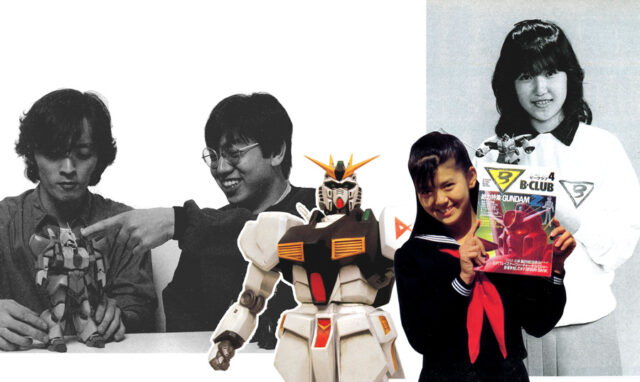At the tail end of the gunpla boom, Bandai’s enthusiast publishing and garage kit division, B-Club, unleashed a monthly magazine and dozens of garage kits on a modeling community that was growing out of normal plastic model kits.


At the tail end of the gunpla boom, Bandai’s enthusiast publishing and garage kit division, B-Club, unleashed a monthly magazine and dozens of garage kits on a modeling community that was growing out of normal plastic model kits.

Unearthed via the DVD-ROM features of an ancient US Manga Corps digital video disc, we speculate on the provenance of the models used for filming on Genocyber.

The Emotion logo was created in 1983 — around the same time moai statues made a surreal appearance as spacefaring, laser-vomiting opponents in shooting game series Gradius. Just why is Japan so moé for moai?

Originally conceptualized at the height of the real robot boom as a 26-episode TV series called Omega City 23, Megazone 23 went through numerous changes and iterations before it became a cutting edge OVA. For the first time, the original pitch document of Omega Zone 23 is available to read in Japanese and English.

Seemingly everywhere during the VHS era, this early standout in the girls n’ guns genre began as a 3D photo novel and a series of garage kits.

Fans have spent years lamenting the lack of a decent sequel to Bubblegum Crisis. The AD Police Files OVA series is often touted as the best of the sequels and reboots out there, but it’s the manga that inspired the OVA that’s really worth checking out.

Thirty years after its release Dragon’s Heaven still stands out from the crowd of early OVA titles.

ARTMIC’s classic “boy-meets-mecha” OVA was released in December of 1987. Three decades later, it still rocks.

Production material for Dragon’s Heaven (1988) can be hard to come across, but we’ve put together a gallery of lineart and reference material used during the creation of this unusual OVA.

Flashback to the thirty-year-old OVA that said goodbye to Minmay, Misa, and Hikaru.